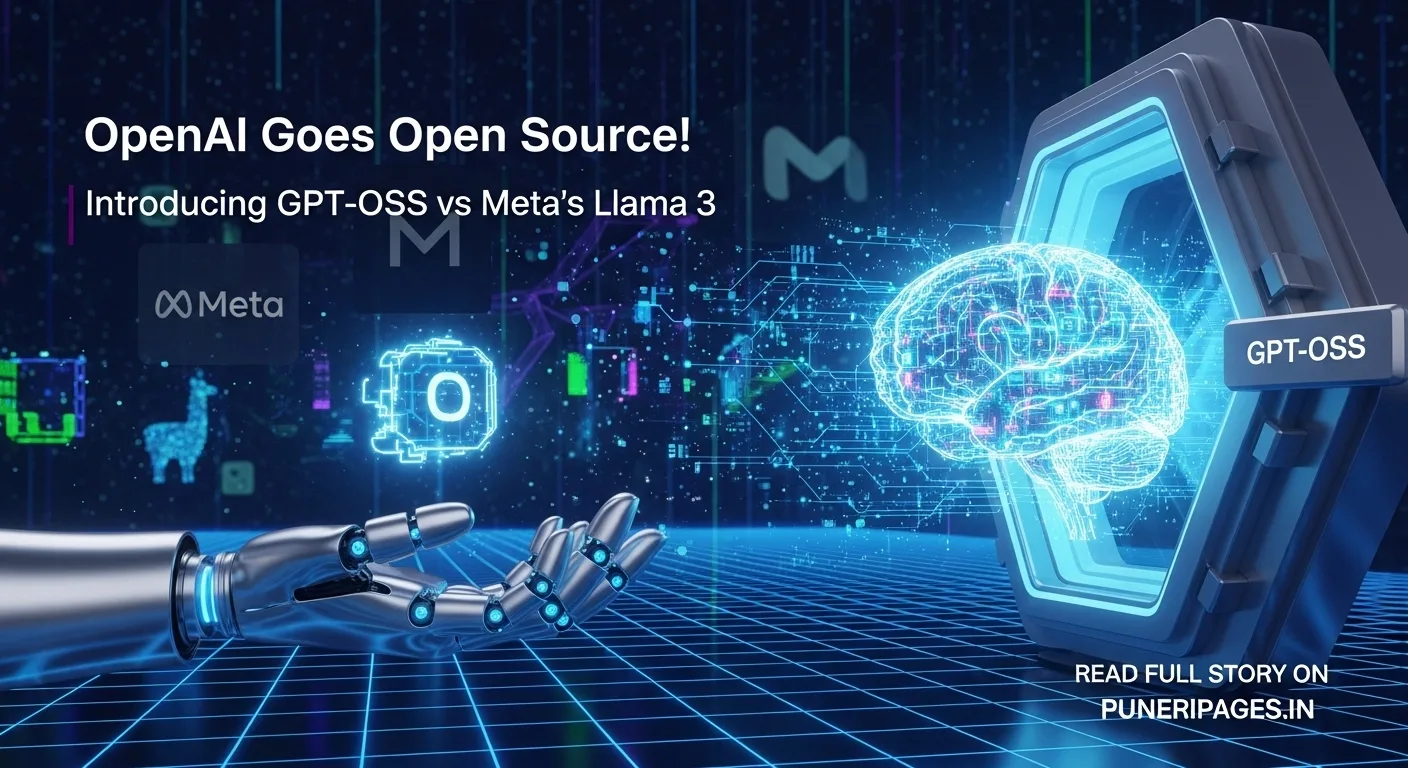
OpenAI makes a bold move by launching GPT-OSS as open-source, directly challenging Meta’s Llama 3. Full article at puneripages.in.
By Prashant for PuneriPages.in
If you’re even remotely into tech or AI, you’ve probably heard something huge just happened—OpenAI dropped a bombshell, and no, it’s not GPT-5. It’s called GPT-OSS, and it’s open-source.
Yes, you read that right. OpenAI, the company that practically invented the concept of keeping powerful AI models locked behind an API paywall, just cracked open the gates. I had to double-check to believe it myself. So let me break down what’s going on, why they did it, and what it really means for all of us watching the AI space.
Table of Contents
Why Now? What’s OpenAI Really Thinking?
1. Meta’s Llama Changed the Game
Meta’s Llama models—especially Llama 2 and now Llama 3—have been a hit with devs and researchers who want more transparency and control. Llama basically became the cool open-source kid in class. OpenAI couldn’t ignore that. So what do they do? Drop GPT-OSS and reclaim the spotlight.
This move isn’t just reactionary—it’s strategic. OpenAI wants to win back developers, hobbyists, and indie AI startups who were slowly drifting toward Meta.
2. It’s a “Free Sample” Strategy
Let’s be real: OpenAI isn’t giving away the crown jewels. GPT-4 and future GPT-5 are still paid and premium. But GPT-OSS? It’s the entry drug. The idea is simple—get developers in early, get them building and trusting the OpenAI stack, and when they need more firepower, guess who they’ll pay for it?
3. Trust, Audits, and Global Innovation
One of the biggest criticisms OpenAI faced was about being too closed. Now, with GPT-OSS, they’re saying: “Alright world, have at it.” Researchers can audit it. Startups can build with it. And regulators? Well, they’ll probably chill out a bit knowing there’s some transparency now.
Honestly, it’s a smart way to build trust while also spreading responsibility.
GPT-OSS: The Basics
Here’s what you’re working with:
| Attribute | Details |
|---|---|
| Model Size | 1.6B parameters |
| Training | Pretrained transformer, no fine-tuning |
| Tokenizer | tiktoken-compatible |
| Benchmarks | Decent—not state-of-the-art |
| License | Apache 2.0 (Commercial use allowed) |
| Access | GitHub |
So yeah, it’s not the biggest model out there. But it’s clean, legal to use commercially, and simple enough to start playing with right away.
Winners and Losers
Let’s call it like it is.
Winners:
- Startups & Indie Devs: You now have a quality OpenAI model without having to beg for API credits.
- OpenAI: They’ve just shifted the perception from “walled garden overlord” to “flexible ecosystem leader.”
- AI Community: More models = more competition = faster innovation.
Losers:
- Meta: Llama’s unique value as the go-to open model? It’s gone.
- Mistral, Cohere: Their niche open models now compete with OpenAI’s brand muscle.
- Google: Still stuck between being too slow and too closed.
This Is Bigger Than It Looks
OpenAI isn’t just tossing a bone to the dev community. They’re executing a full-blown hybrid strategy:
- Open-source models to hook developers.
- Premium APIs for those who scale.
- And most importantly, a seamless path between the two.
It’s like giving away the first level of a game for free, but the expansions? Yeah, those cost.
Final Take
If you’ve ever felt like OpenAI was too closed-off, this release is your moment. GPT-OSS is OpenAI saying, “We see you, we hear you, and we want you back.”
To me, it’s more than just a product launch. It’s a strategy—a calculated shift in how OpenAI wants to be seen and how it plans to win the next phase of the AI race.
And guess what? The game’s just getting started.




